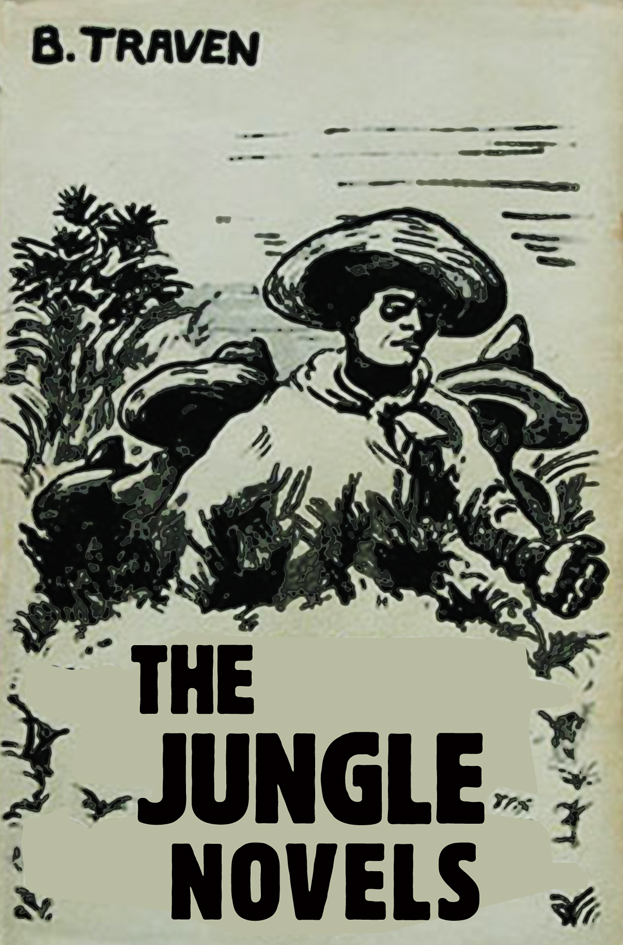
- This event has passed.
B. Traven’s Jungle Novels

convened with the Indigenous Peoples Reading Group
“My personal history would not be disappointing to readers, but it is my own affair which I want to keep to myself. I am in fact in no way more important than is the typesetter for my books, the man who works the mill; no more important than the man who binds my books and the woman who wraps them and the scrubwoman who cleans up the office.” —B. Traven
The writer with the pen name B. Traven appeared on the German literary scene in 1925, when the Berlin daily Vorwärts, the organ of the Social Democratic Party of Germany, published the first short story signed with this pseudonym on 28 February. Soon, it published Traven’s first novel, Die Baumwollpflücker (The Cotton Pickers), of which the first book edition was Der Wobbly, then the common name for members of the Industrial Workers of the World. Traven introduced for the first time the figure of Gerald Gales (in Traven’s other works his name is Gale, or Gerard Gales), an American sailor who looks for a job in different occupations in Mexico, often consorting with suspicious characters and witnessing capitalistic exploitation, nevertheless not losing his will to fight and striving to draw joy from life. Mexico was a good place for a European revolutionary refugee to re-make himself. The Mexican Revolution, ten years of armed conflict between 1920 and 1920, had ended the thirty-year dictatorship of Porfirio Díaz. The man to be known as the writer B. Traven, abandoned his past and immersed himself in Mexican culture, and by 1935 was receiving favorable reviews in The New York Times. He wrote The Treasure of the Sierra Madre, Death Ship, and the six volume series we will read this term.
The Jungle Novels are a group of six novels published in the years 1930–1939 and set just before and during the Mexican Revolution from 1910-20. Traven’s purpose in the Jungle Novels is to describe the conditions of a people who are ripe for change, and to trace the beginnings of how consciousness changes and sometimes leads to revolt.
The Jungle Novels are:
The Carreta (1930) The hero of The Carreta is an ox-cart driver. More sophisticated than most of his companions who work in debt-slavery in the great mahogany plantations,
Government (1931) Depicts the political corruption that infected even the smallest villages in Mexico, the novel tells the story of Don Gabriel, a minor government functionary who has a virtual license to steal from every village where he is secretary―except there is nothing to steal.
March to the Montería (a.k.a. March To Caobaland) (1933) March to the Montería is the third of B. Traven’s six Jungle Novels, set in the great mahogany plantations (monterías) of Mexico in the years before the revolution. Celso works two years on a coffee finca, but when he returns home he must hand over his money to ladinos who claim his father has a debt to them.
Trozas (1936) Trozas (the word means logs) captures the origins of the rebellious spirit that slowly spread through the labor camps and haciendas, culminating in the bloody revolt that ended Porfirio Díaz’s rule.
The Rebellion of the Hanged (1936) This fifth Jungle Novel culminates in a revolt by the long-oppressed workers against the owners and overseers of the camps, and in a treacherous march through the jungles at the height of the rainy season—a human feat of epic proportions.
A General from the Jungle (1940) Juan Mendez leads an ill-equipped and hungry band against the government forces. With brilliance and cunning, Mendez brutally attacks the federally protected fincas. The sixth and last of The Jungle Novels is filled with marvelously drawn characters, yet the true hero is the army itself―illiterate, uneducated, and poor, but resourceful and dangerous.
THE INDIGENOUS PEOPLES READING GROUP which has grown from the enthusiastic call for the need of greater understanding of the long history of the peoples of North America and other continents of the world who were of those continents before and remain after the European colonists came to settle and bring this capitalist relations to every corner of the globe. Our group began following a stirring presentation by Roxanne Dunbar-Ortiz September of 2014 where she introduced An Indigenous Peoples’ History of the United States.
